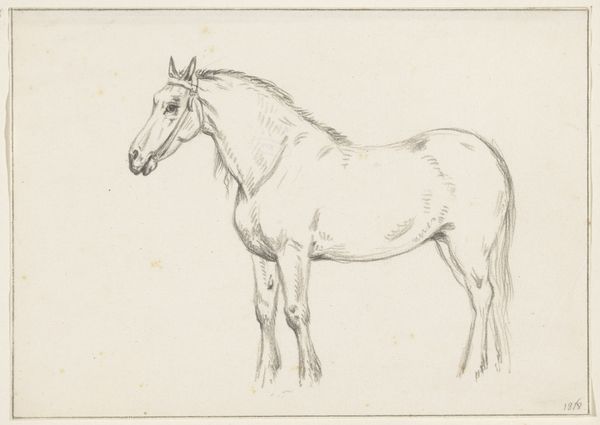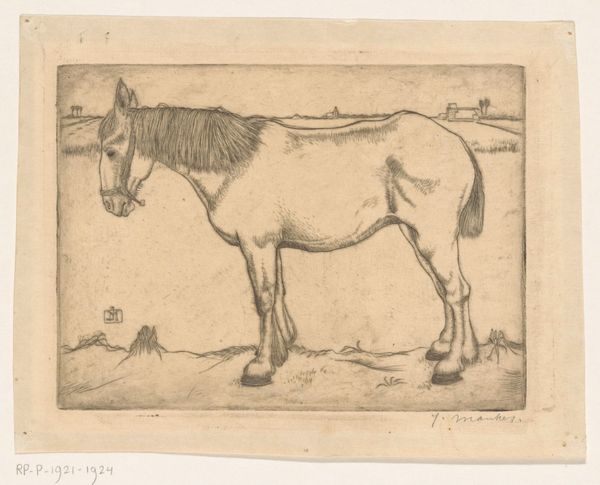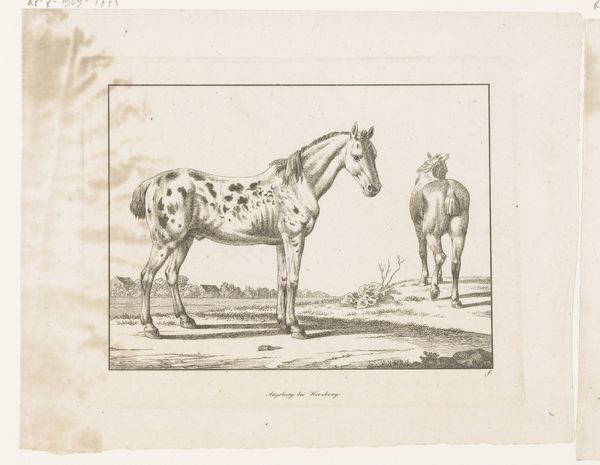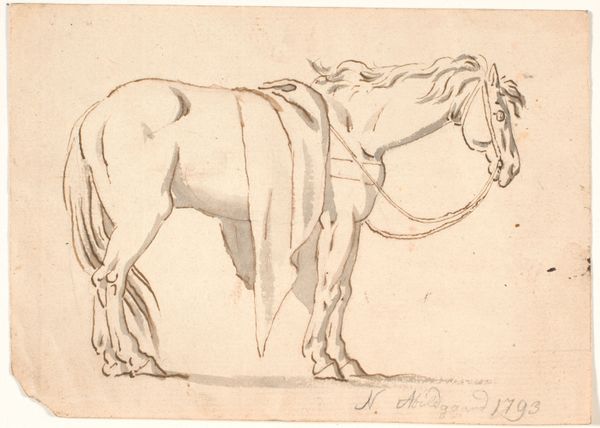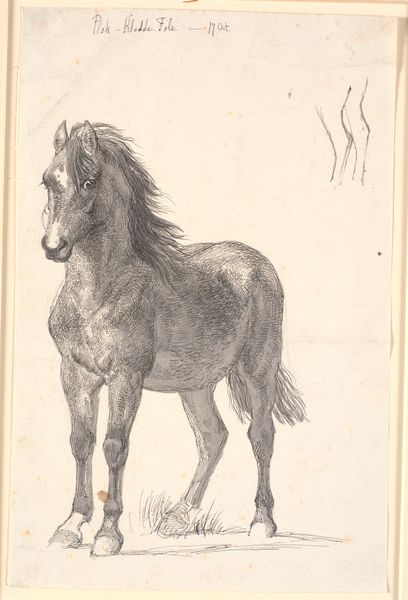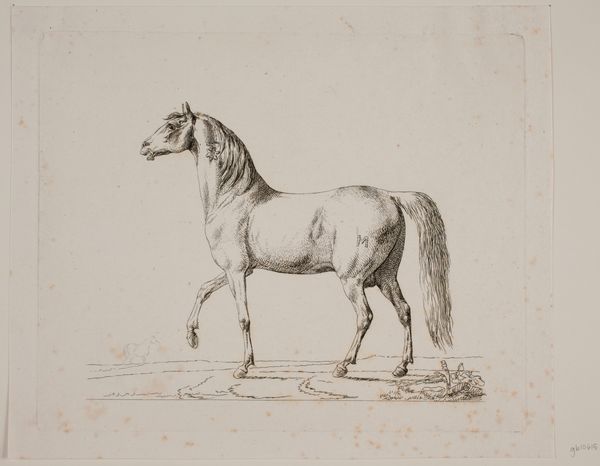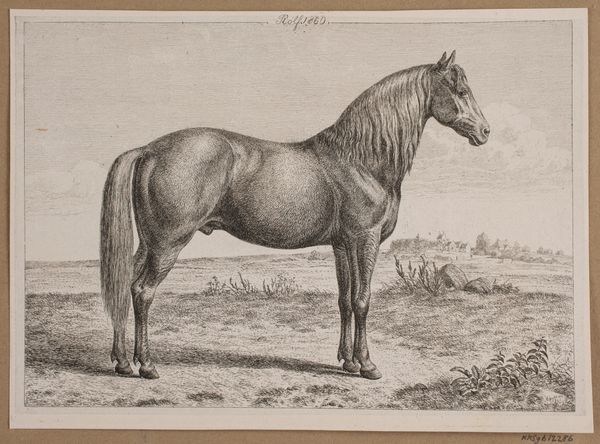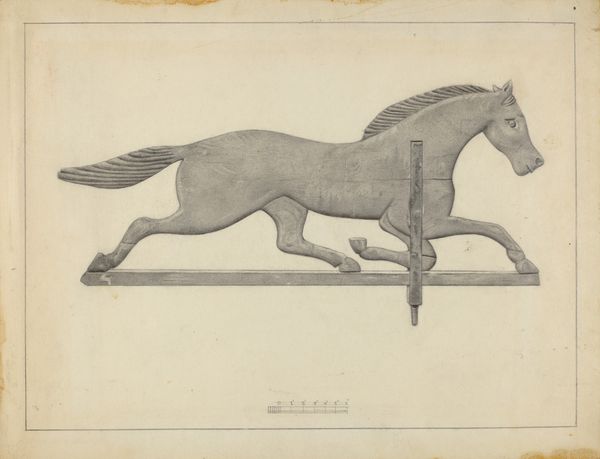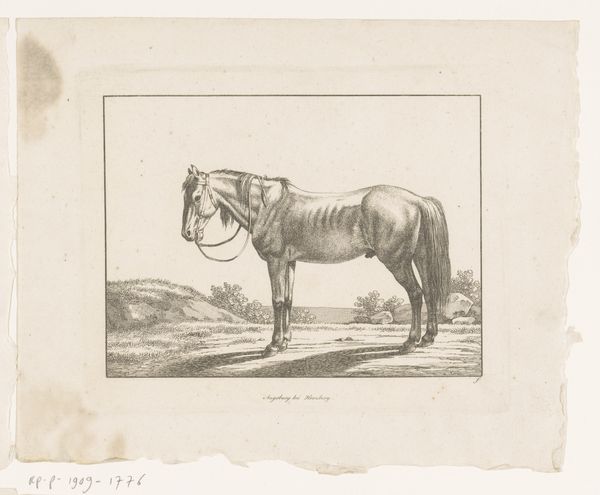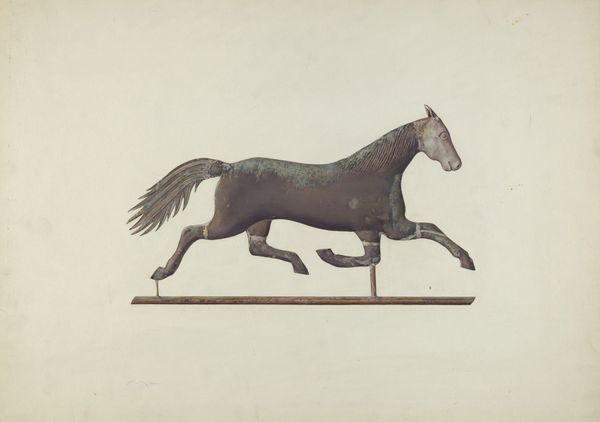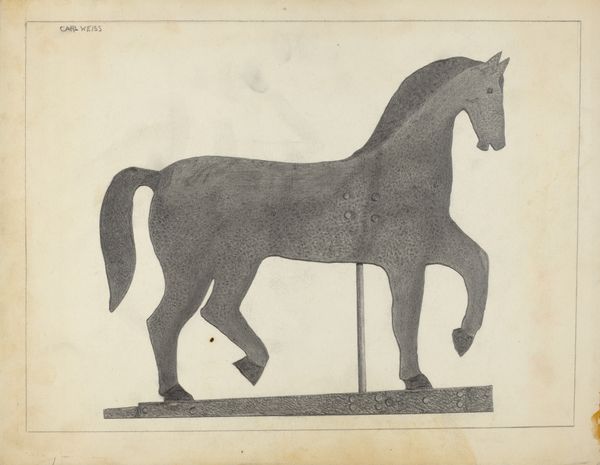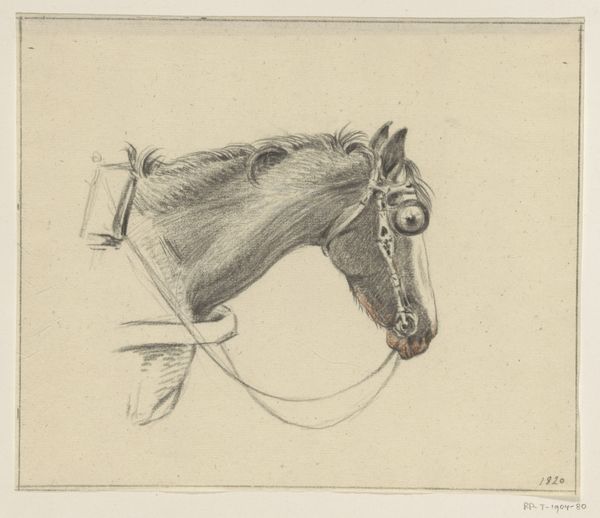
The Anatomy of the Horse, including a particular description of the bones, cartilages, muscles, fascias, ligaments, nerves, arteries, veins, and glands 1766
0:00
0:00
drawing, print, pencil
#
drawing
#
narrative-art
# print
#
figuration
#
pencil
#
history-painting
#
academic-art
#
realism
Dimensions: 18 1/4 x 23 in. (46.4 x 58.4 cm)
Copyright: Public Domain
Curator: As you can see, we have before us a page from George Stubbs's *The Anatomy of the Horse, including a particular description of the bones, cartilages, muscles, fascias, ligaments, nerves, arteries, veins, and glands*, published in 1766. What's your initial response? Editor: Striking! There's something unsettling, yet captivating, about the precise rendering of the horse's anatomy laid bare. The detail is incredible, creating a rather stark beauty in what is essentially a diagram. Curator: Absolutely. Stubbs spent years meticulously dissecting horses, often suspending the carcasses so he could study them from different angles. This dedication is reflected in the accuracy of the depiction. He wasn’t formally trained in artistic techniques, which enabled a different approach to anatomical illustration by working closely with surgeons and scientists in a practice of collaborative and embodied knowledge-making. Editor: I agree, this is a departure from romanticized equine depictions of the era. But look at how he plays with light and shadow! Even in this, essentially, print, there's a remarkable attention to the textures of the muscles and bone. It speaks to an understanding of form that extends beyond mere scientific representation. I'm struck by the contrast between the density of the musculature and the delicate tracery of the skeletal system. Curator: That is true; the very existence of this work also opens questions concerning patronage in 18th-century scientific pursuits. Stubbs self-published the volumes, a testimony to the nascent commodification of scientific knowledge. The detailed drawings were instrumental in the evolution of veterinary science, significantly benefiting landowners by allowing for more precise knowledge about animal husbandry. Editor: That connects to something else I see here. By stripping the horse of its external form, he invites a new appreciation for its internal architecture. You are left reflecting on universal themes—mortality, perhaps, and the elegant machinery of the body. Curator: Indeed. What at first seems like a straightforward anatomical study evolves into an essay about our own materiality. I came here eager to explain about the context of making the anatomy textbooks. And now I am reflecting about how art-making is often born from the collision of science and labor. Thank you. Editor: And for me, it began as simply a masterful, yet haunting, arrangement of lines, shades, and shapes. I am still overwhelmed by Stubbs' attention to detail. A pleasure, as always!
Comments
No comments
Be the first to comment and join the conversation on the ultimate creative platform.


